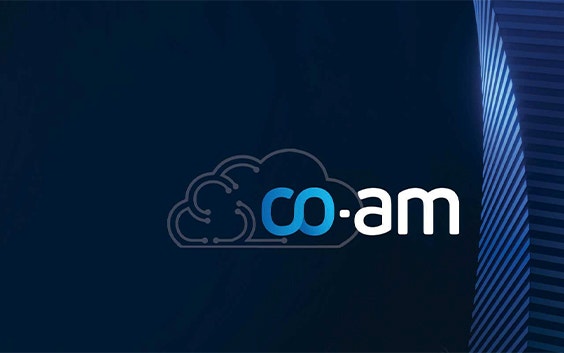EXPERT INSIGHT
How Does 3D Printing Help Organizations Future-Proof Their Supply Chains?

With the ongoing pandemic and military conflicts negatively impacting supply chains worldwide, organizations are looking for new and efficient ways to transform and future-proof their supply chains.
Trends in the market
Additive manufacturing (AM) has been recognized as an Industry 4.0 technology with the potential to increase supply chain agility by enabling on-demand distributed manufacturing to meet consumer and industrial demand. However, several financial and intangible hurdles still prevent organizations from fully adopting industrial 3D printing. These range from justifying capital investment for acquiring AM hardware, recruiting talent to deliver high-quality AM services, and navigating IT and compliance requirements to improving data security when doing day-to-day business.
How are modern businesses using AM to their strategic advantage?
With evidence that AM can help organizations save costs from part obsolescence, improve product performance, and de-risk manufacturing strategies — why aren’t more organizations turning to AM to future-proof their supply chains? We believe this can be explained by three main factors:
- Reason 1: AM production processes require a high level of expertise and experience that can take years for an organization to acquire and build.
- Reason 2: setting up an AM factory requires high capital investment and employing skilled production staff leads to increased operational expenses and deployment risk.
- Reason 3: organizations often lack clear use cases for applying 3D printing in a more traditional manufacturing environment and non-tech-driven industries.
Here at Materialise, we’ve noticed that Fortune 500 businesses are turning to service bureaus and contract manufacturers to fill these gaps. With the rise of cybersecurity concerns, organizations are looking towards digital platforms to secure their digital thread and improve operational performance. This will improve collaboration and production deadline management across internal operations and trusted vendors.
The top five industrial sectors leveraging the digital supply chain programs
There are tangible reasons to partner with AM specialists beyond the typical reasons of accessing AM capabilities and maximizing the capacity for outsourcing to service providers and contract manufacturers. Here are a few industry examples of how organizations are designing business models to support their needs with qualified partners:
- MRO in aerospace
It is no secret that aerospace organizations seek qualified suppliers that can meet their stringent requirements to produce parts to support their maintenance, repair, and overhaul (MRO) programs. This helps bolster their production capacity, supporting company growth while ensuring high levels of data protection by introducing digital infrastructure to connect their employees with their vendors.
- Spare parts production in oil and gas
Organizations in the energy sector are turning to AM for spare parts production with original equipment manufacturers (OEMs) qualified to supply components. If an OEM is not available, they will reverse engineer the part. And in compliance with intellectual property (IP) laws, they will find a supplier to produce the part based on the 3D model. When IP is not an issue, they will print the spare part at one of their many AM internal facilities.
- Outsource production and develop IP in-house in automotive
Automotive companies have been developing AM expertise in-house for years. However, as the list of AM-qualified parts continues to grow, these organizations have now reached a point where they are ready to outsource AM production and build a strategic AM supplier network. This allows them to focus on exploring and developing new AM applications in-house and expand their IP portfolio.
- Mass personalization in consumer goods
AM has enabled consumer brands to take customer centricity to the next level. Brands are developing new customer experiences where product stock-keeping units (SKUs) can be tailored to the customer's specific needs via scan-to-print or browser-based product configurators. This is possible even if they have no in-house AM production capabilities. By partnering with an external supplier, they are able to achieve the required level of personalization, as well as the ability for on-demand production and the use of more sustainable materials.
- Patient-specific parts in medical
The medical device sector might have provided some of the best AM use cases out there and has been applying AM routinely for years. Although large medical device organizations can leverage their size to expand their in-house AM capacity, MedTech start-ups have used the same AM technologies to bring their innovative ideas to the market. This can be achieved by routing production requests directly via the Health Insurance Portability and Accountability Act of 1996 (HIPAA) and ISO 13485 compliant production facilities without capital-heavy investments.
AM allows organizations to develop creative solutions to support their unique business models. With limited human and capital resources, organizations are turning to innovative digital solutions to streamline and standardize their business processes to achieve scalable results. In return, this helps employees follow best practices developed by the organization to ensure manufacturing repeatability, on-time delivery, and achieve quality output across internal sites and external partners.
Introducing the CO-AM Vendor Management System
Recently, Materialise launched CO-AM, an open and agnostic software platform that gives manufacturers cloud-based access to a full range of software tools, allowing them to plan, manage, and optimize every stage of their AM operations.
The new CO-AM Vendor Management System (VMS) will help both AM-native and inexperienced AM organizations by offering the ability to strengthen their supply chain. Plus, CO-AM VMS will support organizations scale their operations sustainably by leveraging qualified vendors to support their unique business models.
- AM-native organizations
For organizations with existing in-house AM capabilities, CO-AM VMS allows them to quickly scale their AM production capacity and expand their service offerings, such as offering a wider range of AM technologies.
As these organizations create new businesses by leveraging their know-how, they can take advantage of additional third-party solutions to streamline their operations with CO-AM VMS. For example, for spare parts and MRO programs by integrating part screening applications (i.e., Castor3D) and outsourcing parts to vendors for production. Meanwhile, to enable mass personalization, leveraging scan-to-print and browser-based configurators can support these initiatives.
- Inexperienced AM organizations
For organizations without in-house AM capabilities, VMS allows them to partner with industry-leading AM contract manufacturers and set up a direct link to their production facilities. All of this in a quick and easy manner and without requiring capital-heavy investments.
At its core, CO-AM VMS centralizes incoming production requests, automates the routing of these jobs to contract manufacturing partners, and manages the communication between internal and external stakeholders.
By doing so, organizations get an end-to-end overview of the production process, which improves traceability and quality output. As CO-AM VMS is part of the Materialise CO-AM Software Platform, it’s possible to create an e-commerce portal for streamlining B2C order entry, produce a B2B ERP work order submission, or make a digital parts catalog to house validated SKUs. There’s even the ability to integrate VMS with our manufacturing execution system (MES) to have more visibility of shop floor activities.
With this in mind, our new CO-AM VMS helps organizations control costs, improve time efficiencies, and scale AM workflows — no matter the industry or the company’s familiarity with AM.
Share on:

Meet the author
Vishal Singh
You might also like
Never miss a story like this. Get curated content delivered straight to your inbox.
